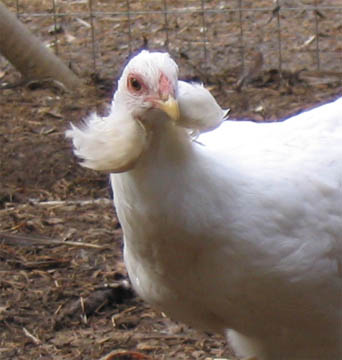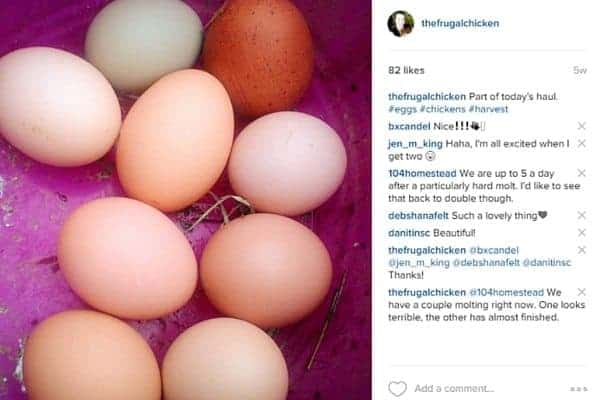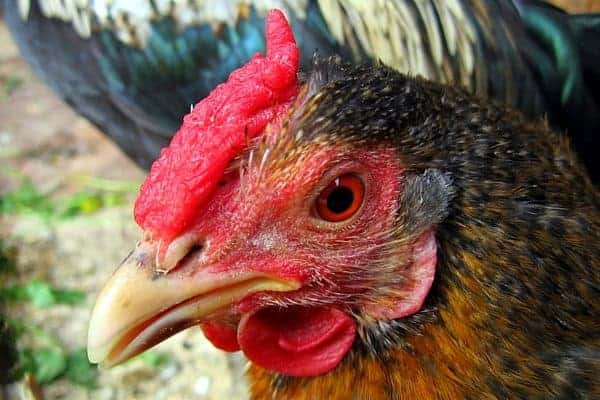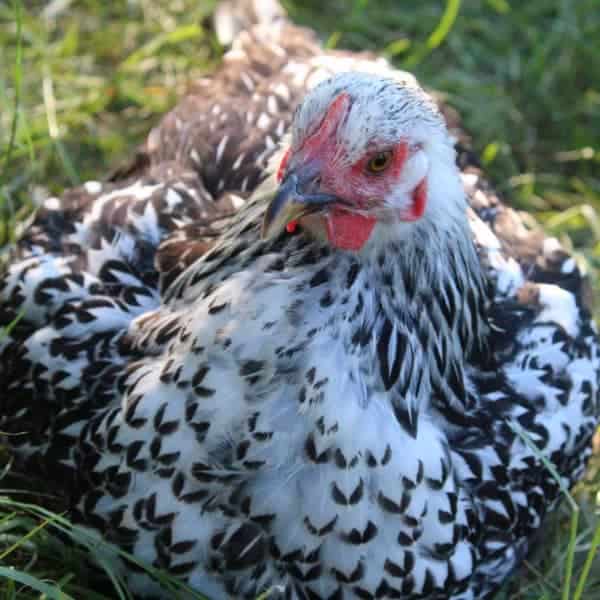Do you want different colored eggs in your morning egg basket? Who doesn’t?
I have often been emailed by people asking: “Why are chicken eggs different colors?” So let’s talk about different chicken egg colors.
Harvesting different colored eggs is one of the best parts of chicken ownership, and I personally keep certain breeds, such as Easter Eggers and Blue Copper Marans, on our homestead just so I can harvest different colored eggs.
It’s wonderfully exciting to check the coop only to find a blue, green, pink, or dark brown egg in the hens’ favorite nest (because they all have to pile into the same nesting box!).
In fact, I love gathering different colored eggs so much that the only egg color we don’t have on the homestead is white!
Have you ever wondered why chicken eggs come in different colors?
Well, I have an answer for you!
While most eggs start off as white as the yolk is encased in a shell and travels down the oviduct, according to the University of Kentucky, their final color is based on the chicken’s genetics.
In most cases, only once the egg hits the uterus does it actually become colored.
Except…
Unless your hen is an Ameraucana, Araucana, or an Easter Egger that lays blue eggs.
Why’s that?
These two breeds use the pigment oocyanin to color their egg shells blue, and as the pigment is deposited on the egg as it travels through the oviduct, it permeates the egg.
Unlike other pigments, oocyanin covers eggs earlier in the shell-making process. This results in the interior and exterior of the egg being the same blue color, the University of Michigan found.
With olive eggers and Easter Eggers that lay different colored eggs, a brown pigment called protoporphyrin overlays a blue shell, which results in a green egg, and a blue interior egg shell.
So what about the rest of the chicken breeds that lay different colored eggs?
Their interiors are white, and that’s because chickens that lay brown tinted eggs deposit the protoporphyrin on the eggs much later in the shell forming process than oocyanin.
Because of this, protoporphyrin does not penetrate the interior of the egg, but colors only the surface of the egg, leaving the interior white.
The breed of your chicken will determine how her eggs are colored, whether they are brown, white, green, etc., but her individual genetics will determine the exact shade.
In case you don’t know, chickens, like humans, are born with millions of eggs in her ovaries, but she will only lay a fraction of those eggs in her lifetime.
After the egg is released, which is a hormonal response, it takes 26 hours to actually be laid, and during that time, it goes on a journey through her oviduct. Most of that time is spent forming the egg shell.
Only in the last few hours before the egg is laid does the pigment get added, creating the different colored eggs we find in our coops.
Pretty exciting stuff, don’t you think?
So…
Which chicken breeds lay different colored eggs?
While there’s a lot of chicken breeds that will lay different colored eggs, a short list of the most colorful eggs include:
- Marans for dark chocolate colored
- Easter Eggers for green, blue, or pink
- Olive Eggers (a cross between a brown layer and a blue layer) for dark green
- Araucanas for blue
- Ameraucanas for blue (although Ameraucana and Araucana are referred to interchangeably, a true Araucana is a descendent of the chickens imported Chile to America in the 1920s).

What about eggs that are speckled or with different shades?
While these eggs are usually completely normal, they can also be abnormal chicken eggs, and an indication something is not right with your hen.
Sometimes her diet can be off, or she might be experiencing some sort of stress like heat stress.
Speckles usually are normal, and are a welcome, and often beautiful, change!
Curious about how to tell if your chickens will lay different colored eggs other than white?
An interesting tip is to look at the chicken’s ear lobes.
Typically a chicken with white ear lobes will produce white eggs, while those with red earlobes will produce brown or different colored eggs.
Do the different colors impact the flavor or the health value of the eggs?
In short, nope.
Believe it or not, this is a common question I get from people unfamiliar with chickens.
A study by the University of Kansas showed that although brown eggs are more popular in grocery stores because they’re perceived as healthier, in fact the different colors in an egg has nothing to do with how healthy they are.
Different colored eggs and white ones have the exact same amount of cholesterol in them.
So eat away at those different colored eggs and don’t worry about whether they’re more or less nutritious for you (your hen’s diet actually determines how healthy her eggs are for you.)
I’d like to hear from you!
Which different colored eggs are your favorite? Which chicken breeds do you keep for colored eggs (I personally love Easter egger egg colors)? Email me at editor@thefrugalchicken.com or comment below!
More Egg Articles:
- Abnormal Chicken Eggs
- The Anatomy of a Chicken Egg
- How Long Do Chicken Eggs Last?
- Raise Araucana Chickens for Beautiful Blue Eggs
Love to SPOIL your flock with chicken treats? (I know you do!) Then quick like a chick, grab your copy of Cluck Cakes! There’s 11 easy recipes for organic and natural treats you can make in your own kitchen! My hens go WILD for them!
Click here to buy Cluck Cakes.
Maat van Uitert is a backyard chicken and sustainable living expert. She is also the author of Chickens: Naturally Raising A Sustainable Flock, which was a best seller in it’s Amazon category. Maat has been featured on NBC, CBS, AOL Finance, Community Chickens, the Huffington Post, Chickens magazine, Backyard Poultry, and Countryside Magazine. She lives on her farm in Southeast Missouri with her husband, two children, and about a million chickens and ducks. You can follow Maat on Facebook here and Instagram here.







![What The Veterinary Feed Directive Means & How I’m Preparing [Video]](https://thefrugalchicken.com/wp-content/uploads/2016/12/veterinarian-feed-directive.jpg)


I was so excited this morning when I went out to do my chores. I had two green eggs!!! I normally have brown. And with it being the middle of December I am just excited to have eggs!!!
Yay! Glad to hear they’re still laying. I’ve been dying for some blue eggs, so I bought some Easter Eggers and what were said to be Arcaunas (at least they will have the blue egg laying gene), so I can’t wait for blue eggs!
I have an Americauna and a Favucana, so I know I’ll get blue eggs. I have a. Wyandotte (they lay white eggs, right) 2 Black Star’s, 2 Bahamas, 2 RIR (mixes), a Sebright and a Porcelain d’Uccle. So I think the only thing I’m missing is a Black Copper Maran for the chocolate eggs and an Olive Egged for the green eggs. None of my hens will be laying before Sept. So my fingers are crossed!!